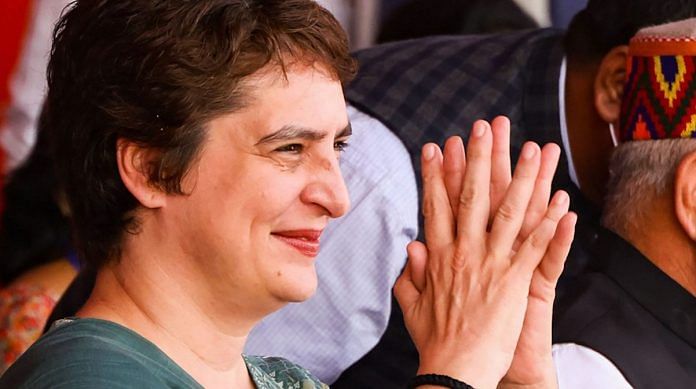The Indian National Congress is contesting 400 seats in the Uttar Pradesh assembly election. Unlike the Bharatiya Janata Party and the Samajwadi Party, the Congress is fighting the election alone. The Congress has decided not to nominate any candidate against Akhilesh Yadav and Shivpal Yadav from the Karahal and Jaswant Nagar constituencies, respectively. In return, the SP hasn’t fielded any candidate against Congress’ Aradhana ‘Mona’ Misra in the Rampur Khas constituency in the Pratapgarh district. However, the Congress candidate from Amroha Sadar — Salim Khan — had joined the SP just before the second phase of polling, leaving the party red-faced.
I provide the caste and community-wise composition of the Congress’ 400 candidates, the data of which have been collected with the help of the party’s state and national-level office-bearers. Previously, I provided the caste and community-wise candidate nominations of the SP, the BJP, and the Bahujan Samaj Party (BSP).
Distribution in broader categories
All 400 candidates of the Congress have been classified into four broader categories — upper castes, backward castes, Scheduled Castes/Scheduled Tribes, and Muslim plus other minorities. The backward castes include only Hindu backward castes; Muslim backward castes have been included in the Muslim category.
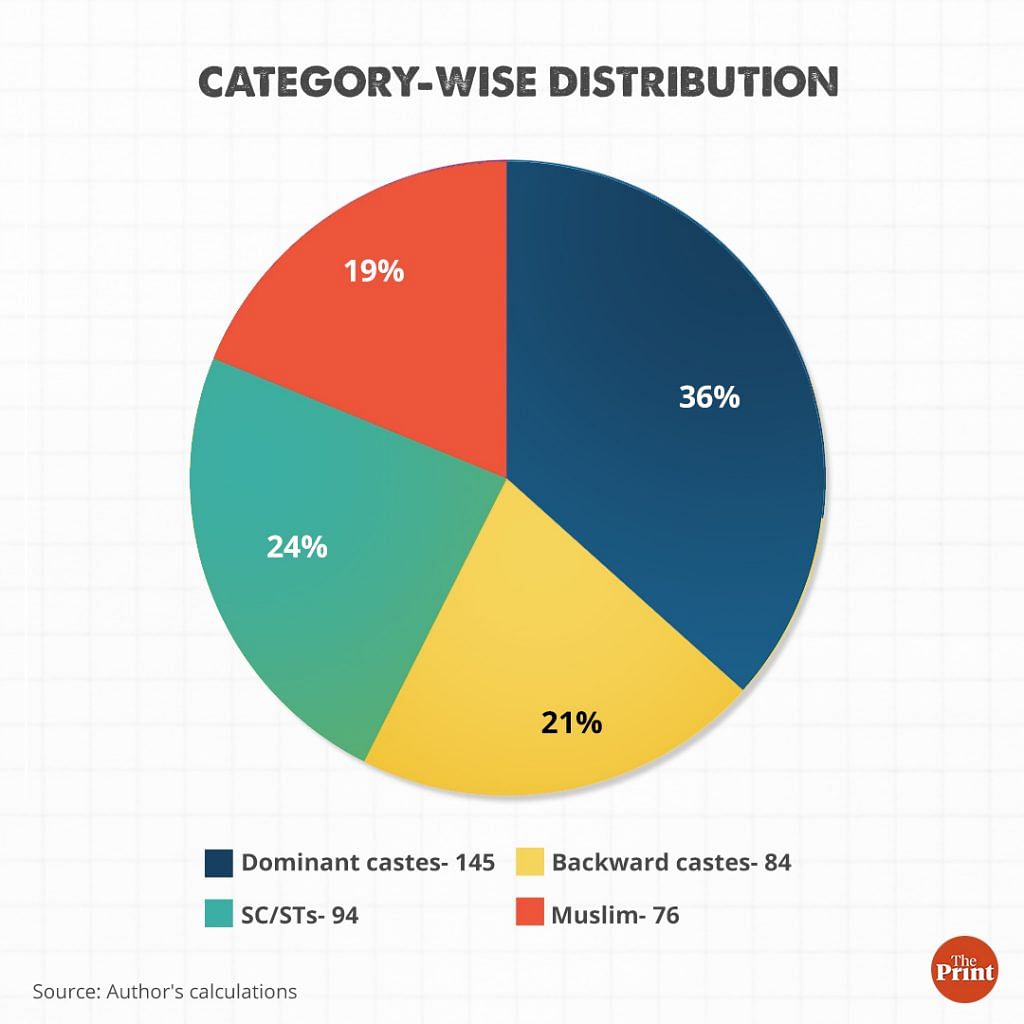
Figure 1 shows that most of the Congress’ candidates belong to the upper castes (147), followed by SC/ST (94), backward castes (83), and Muslim plus other minorities (76). The party has nominated one Sikh and one Christian candidate, who have been clubbed within the Muslim minority category for the sake of analysis.
The highest number of candidates from upper castes indicates that the Congress is still in their grip. According to an estimate, Hindu backward castes constitute around 41.47 per cent of Uttar Pradesh’s population, but the Congress has allocated only 23 per cent of its seats to them.
Also read: ‘Modi diluting Yogi’s anti-incumbency’ and other trends from Uttar Pradesh’s hinterland
Within upper castes, beating the old drum
Within the upper castes, the Congress has nominated the highest number of candidates from the Brahmin community (73), followed by Rajputs/Thakurs (54), Banias (15), and Bhumihars (5). The category of Bania includes the Kayastha, Jain, Khatri castes, which are involved in trade-related activities. Some castes of this community such as Kalwar, Teli, Sonar, and Kandu have been included in the backward castes.
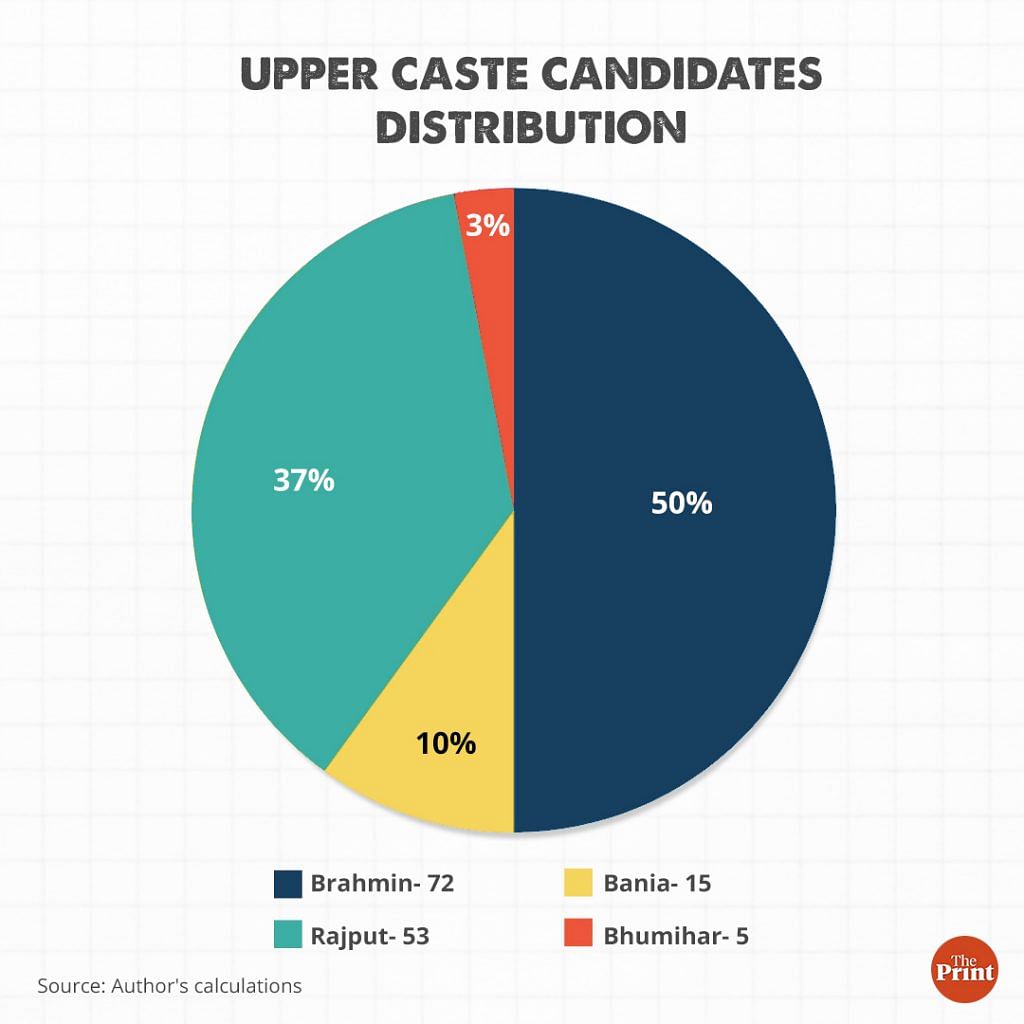
The highest number of tickets to Brahmins shows that the Congress still hopes to win the community back — Brahmins used to be a strong support base of the Congress before they shifted to the BJP. This is like beating old drums in the hope that something good will happen.
The second-highest number of tickets to the Rajputs or the Thakurs indicates that the party either has been targeting to cut into the BJP’s Rajput votebank, or the party machinery has a strong presence of office-bearers from this caste. It is a widely known fact that although Priyanka Gandhi is the in-charge of the Congress in UP, her work is actually taken care of by Sandeep Singh, former Jawaharlal Nehru University Students’ Union (JNUSU) president who had previously served in the team of Rahul Gandhi. Just before the announcement of election, the party also saw the appointment of Dinesh Kumar Singh as the general secretary (organisation) in October 2021. The post of the general secretary (Organisation) is considered to be the strongest after the party president in a state unit. Both strongmen of the UP Congress belong to the Rajput/Thakur caste.
Also read: The BJP’s ‘2ab’ factor that’s missing from SP, BSP, Congress in UP elections
The backward caste candidates
The caste composition of the backward caste candidates reveals that the Congress has nominated the highest number from the Kurmi/Sainthwar community (19), followed by Nishads/Kashyaps/Binds (14), Yadavs (9), Shakyas/Sainis/Kushwahas/Mauryas (8), Jats (8), Lodhs (6), Kalwars/Telis/Kandus (4), and Gurjars (4).
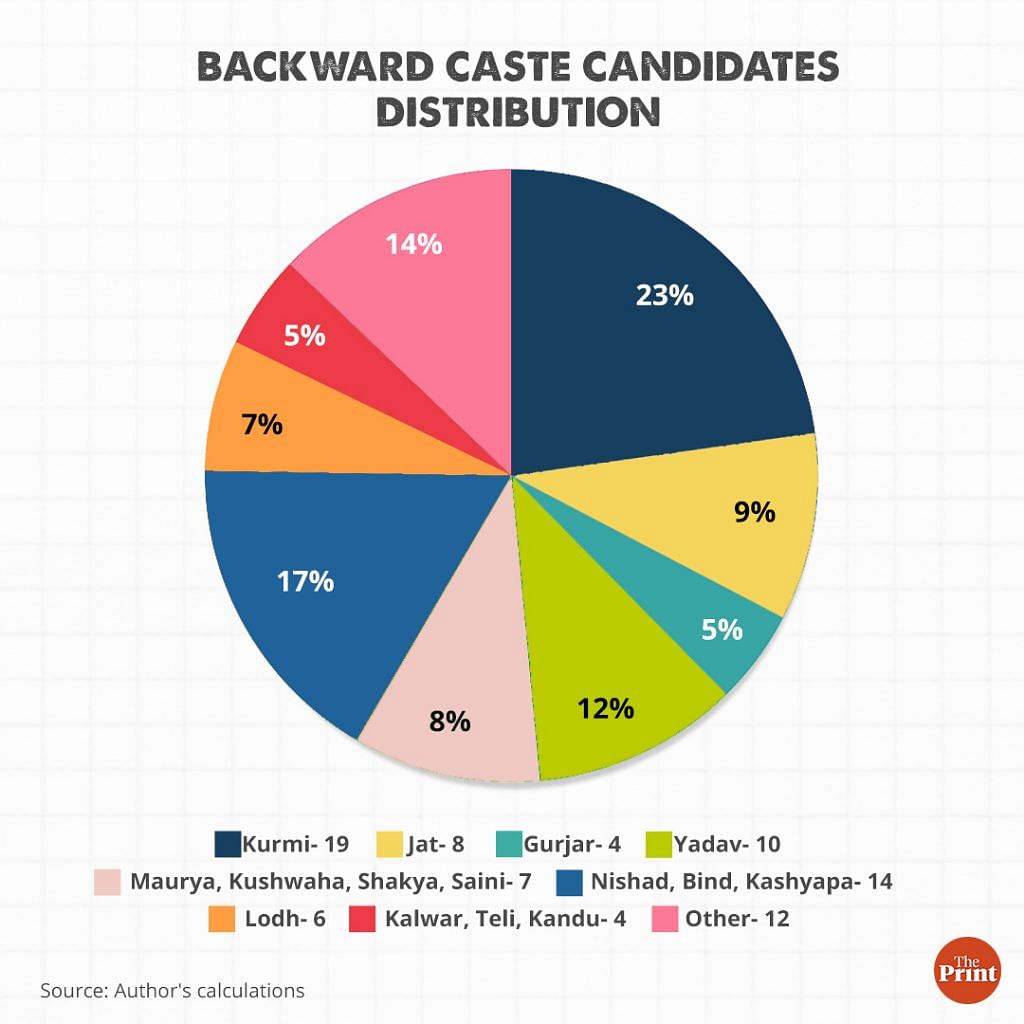
The party has nominated 11 candidates from the rest of the backward castes — Pals/Gaderiyas (4), Kumhars (3), Rajbhars (1), Kambojs (1), and Nonias (1).
Where are SC/ST candidates?
The Congress has nominated 94 candidates from the SC/STs. A total of 86 constituencies are reserved for the two categories, which means that the party has nominated eight SC/ST candidates on non-reserved constituencies — Baheri, Dhaurahra, Biswan, Bakshi Kaa Talab, Chitrakoot, Sirathu, Rasara, and Marihan.
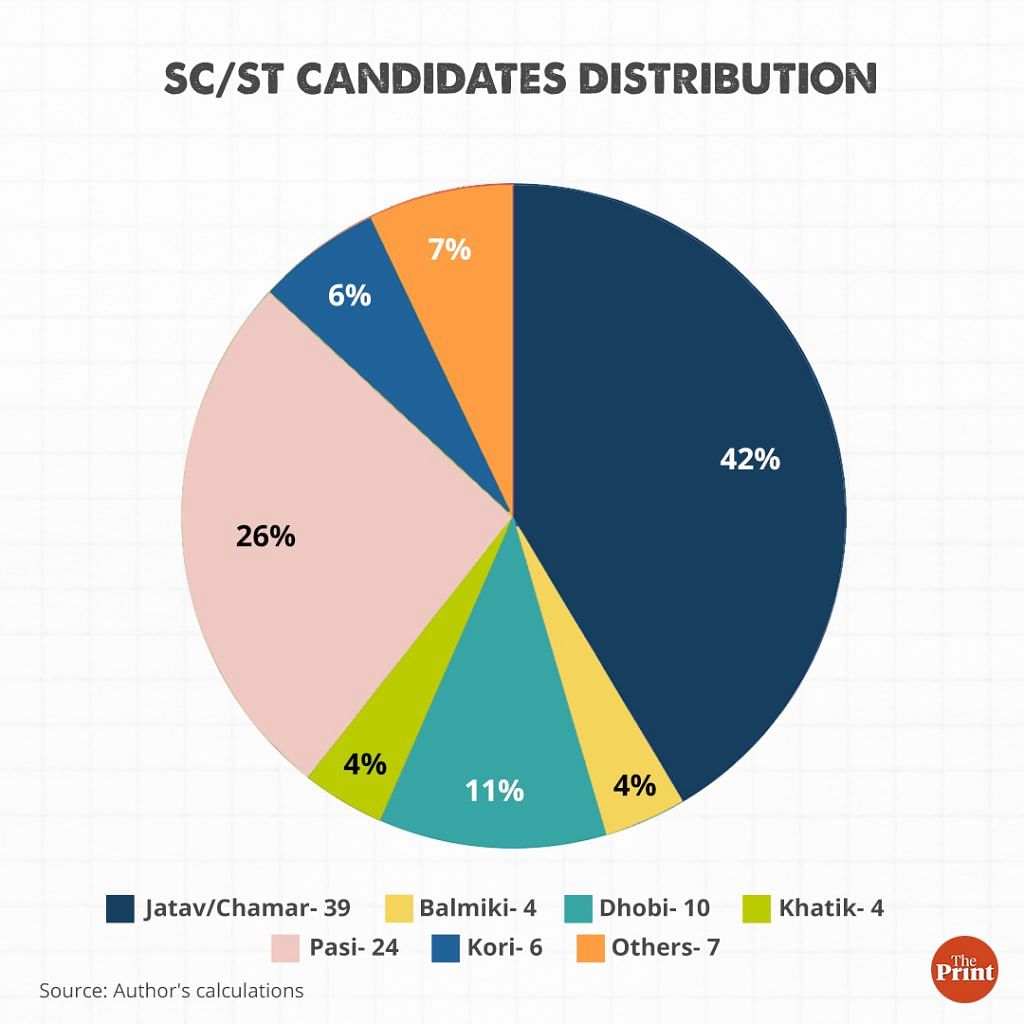
Within the SC/ST candidates, the party has nominated the highest number of candidates from the Jatav/Chamar community (39), followed by Pasis (24), Dhobis (10), Koris (4), Balmikis (4), and Khatik (4). The rest of the seven candidates have been nominated from other SCs/STs-Kols (2), Dhangads (2), Nats (1), Gonds (1), and Panikas (1).
The party’s ticket distribution strategy within the SC/ST category reveals that it has tried to accommodate the maximum number of castes instead of catering to a single one.
Also read: In the ‘battle of Bundelkhand’, BJP, BSP and SP have a new weapon — election tickets
Missing strategic pragmatism
Besides the candidates of the SC/ST category, the caste and community composition of the nominated candidates reveal that the Congress is missing strategic pragmatism since it is still hopeful that Brahmins will return to its fold. The second-highest number of tickets to the Rajputs seems to have an imprint on Sandeep Singh’s team. Whether the Congress would be able to break away a section of Rajput voters with their local candidates when Chief Minister Yogi Adityanath belongs to that caste, is the question which the party should interrogate.
The Congress has long been accused of ignoring backward castes. In fact, due to this ignorance, political scientist Paul R. Brass has termed this party in Uttar Pradesh as a ‘coalition of extremes’ — constituting Brahmins, Dalits, and Muslims, who are vertically and horizontally apart from each other. The party had very little room for the backward castes, which had resulted in the mobilisation of those castes under the banner of socialist parties as well as the BJP.
The Congress leadership has announced on multiple occasions that the party would now start providing due representation to the backward castes, but the ticket distribution strategy reveals that it is yet to act on such promises.
Arvind Kumar (@arvind_kumar__), PhD in Politics, Royal Holloway, University of London. Views are personal.
Read all of Arvind Kumar’s articles on ticket distribution in UP elections here.
(Edited by Humra Laeeq)


